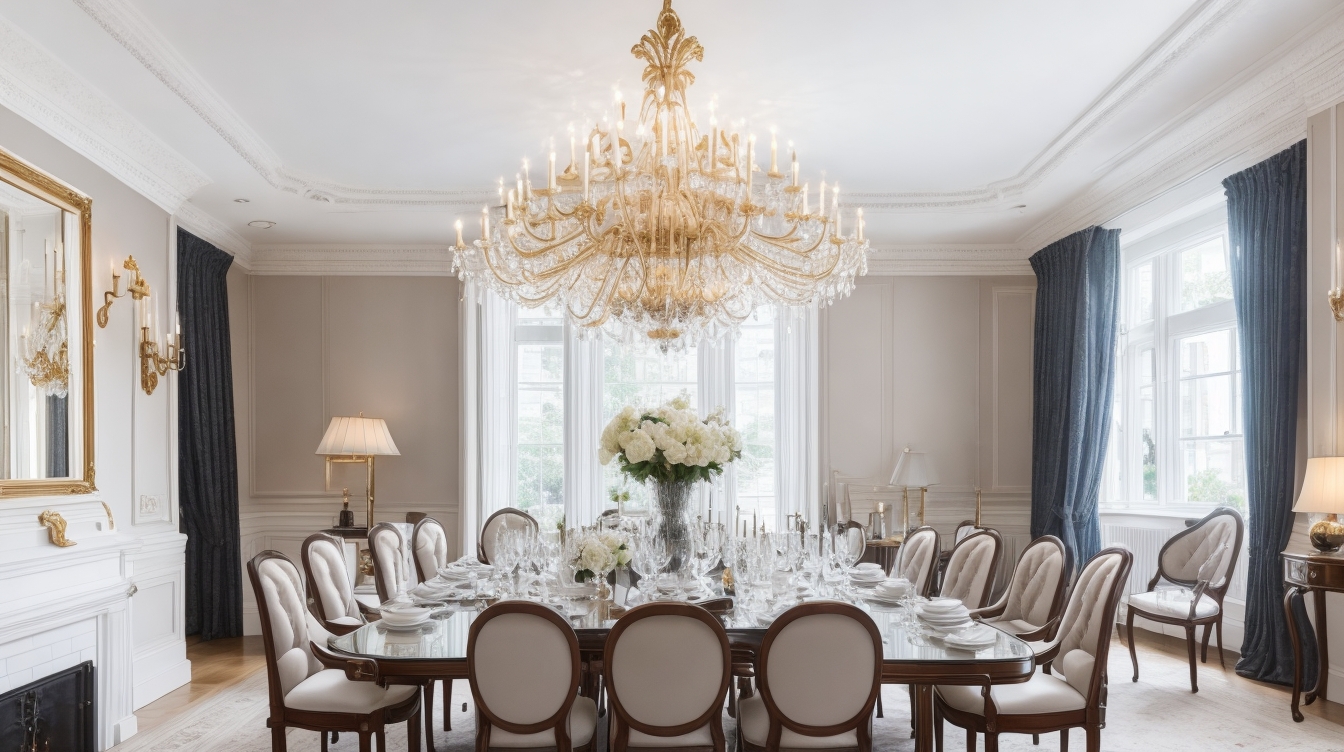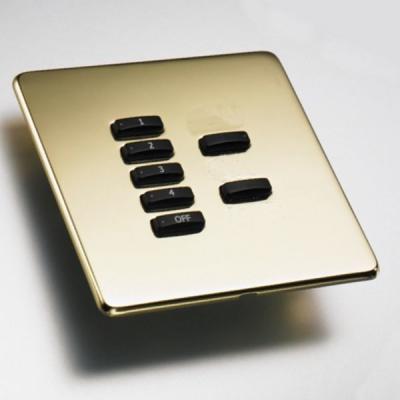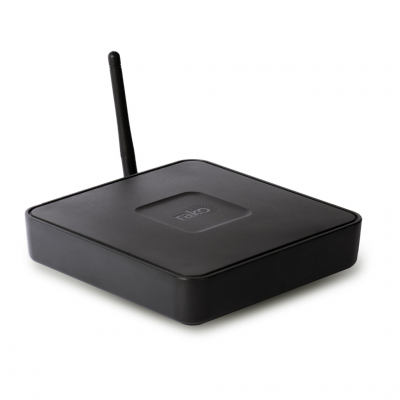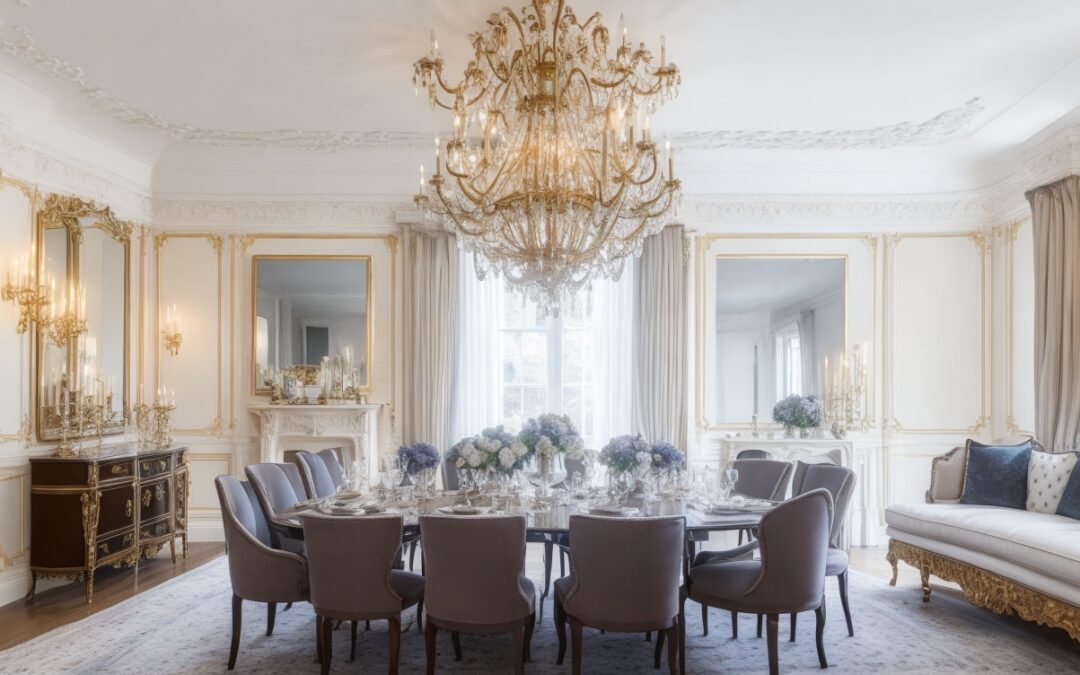The importance of lighting in dining room design cannot be overstated. A well-lit dining room creates ambiance, enhances the functionality of the space, and contributes to an overall enjoyable and inviting dining experience. The right lighting design for your dining room should effectively balance aesthetics and functionality.
In UK residential homes, dining room lighting design styles vary based on the size, architecture, and interior design of the home. As a result, there are several trends and styles in lighting that can cater to one's personal taste and preferences. In this article, we'll delve into the basics of lighting design, current trends in UK homes, how to choose the right lighting for your dining room, and practical tips for installation.
Understanding the Basics of Lighting Design
Ambient lighting refers to the general illumination within a room. It is the foundation of a well-lit dining room and helps create a comfortable and welcoming atmosphere. Task lighting focuses on specific areas within the room where specific tasks are performed, such as a sideboard or a buffet table. Accent lighting is used to highlight decorative elements or architectural features within the dining room, such as artwork or shelves.
Creating a harmonious balance of light in your dining room involves a careful combination of ambient, task, and accent lighting. A good starting point is ensuring that the ambient lighting is soft and evenly distributed throughout the room. This can be achieved through the use of chandeliers, pendant lights, or downlights. Task lighting can be added to illuminate specific areas within the dining room, such as serving stations or sideboards, using table lamps or under-cabinet lights. Finally, accent lighting can be integrated into the overall lighting design to create depth and visual interest, with features such as wall sconces, uplighters, or recessed lighting.
Current Trends in Dining Room Lighting in the UK
When it comes to dining room lighting design in UK residential homes, some popular styles and fixtures include industrial pendant lights, minimalist chandeliers, and versatile track lighting systems. These lighting styles can be easily adapted to various interior design themes, from contemporary to traditional. Additionally, homeowners are increasingly opting for smart lighting systems that can be controlled through mobile applications or voice commands, offering energy efficiency and customisable lighting options.
The architecture and interior design trends within a UK home often influence the choice of dining room lighting design. For example, homes with an open-concept floor plan may use pendant lights or linear chandeliers to provide a visual distinction between the dining space and the surrounding areas. Similarly, the resurgence of vintage and retro styles in interior design has given rise to the use of reclaimed and repurposed materials, brass finishes, and Edison bulbs in dining room lighting design.
Choosing the Right Lighting for Your Dining Room
To make the best lighting choice for your dining room, you need to consider factors such as room size, ceiling height, colour scheme, and furniture style. For example, a large dining room with high ceilings may benefit from a multi-tiered chandelier, while a smaller room may be better suited for a simple pendant light or flush-mounted fixture. The colour scheme should also be considered, as darker colours can absorb light, thus requiring more ambient lighting to achieve the same level of brightness as a room with lighter colours.
Natural light plays a significant role in determining the overall look and feel of a dining room. To make the most of the available natural light, consider placing your dining table near a window or installing skylights. To complement the natural lighting, choose energy-efficient artificial lighting options that mimic the colour temperature and brightness of natural daylight. Layering your dining room's lighting with a mixture of ambient, task, and accent lights will help to create a well-balanced and natural-looking space.
Examples of Successful Dining Room Lighting Designs
Some UK homes have achieved the perfect balance of style and functionality in their dining room lighting design. For instance, a contemporary home may use a minimalist, geometric chandelier as the main source of ambient lighting, along with sleek table lamps for task lighting and wall sconces for accent lighting. In contrast, a more traditional home might opt for a classic crystal chandelier, paired with ornate table lamps and picture lights to illuminate artwork.
Your lighting choices can significantly impact the overall look and feel of the dining room. For example, a warm, dimmable chandelier can create a cosy and relaxed atmosphere, whereas a cool, bright pendant light can impart a fresh, modern vibe to the space. The choice of light bulbs and their colour temperature also plays a critical role in determining the ambiance of the room; warmer light can create a welcoming atmosphere, while cooler light can lend a sharp, contemporary edge.
Practical Tips for Installing Dining Room Lighting
Safety should always be your top priority when installing any lighting fixtures in your home. Electric shock, fire hazards, and incomplete or incorrect installations are risks that homeowners should be aware of. Be sure to turn off the electricity at the circuit breaker before attempting any electrical work and consult the manufacturer's instructions when installing new fixtures.
While some lighting installations can be completed by homeowners themselves, it is often advisable to hire a qualified electrician to ensure the job is done safely and efficiently. Professional installation will also ensure that your lighting fixtures comply with UK wiring regulations and minimise the risk of electrical faults or issues in the future.
Emerging Trends and Innovations in Lighting Design
The future of dining room lighting design is likely to be influenced by emerging trends and innovations in the lighting industry. Some of these trends include the use of energy-efficient LED technology, smart lighting systems that can be controlled via mobile devices, and lighting fixtures that incorporate recycled or sustainable materials.
Environmental concerns and energy efficiency are becoming increasingly important factors in the choice of lighting for UK homes. As a result, homeowners are gravitating towards LED bulbs, which are more energy-efficient and have a longer lifespan than traditional incandescent or halogen bulbs. Additionally, innovations such as solar-powered outdoor lighting and motion-activated lights are gaining popularity as part of the ongoing focus on sustainability and energy efficiency.
Conclusion
Overall, dining room lighting design in UK residential homes is a dynamic and evolving field, influenced by a variety of factors such as personal taste, architectural features, and interior design trends. By gaining an understanding of the basics of lighting design and being aware of the latest trends and innovations, UK homeowners can create a well-lit, comfortable, and stylish dining room that is both functional and visually appealing. With a focus on safety and the adoption of sustainable and energy-efficient lighting solutions, the future of dining room lighting design promises to be brighter than ever.
The Role of Lighting Controls in Creating Mood Lighting
Lighting controls play a crucial role in establishing the desired mood and atmosphere within a dining room. They allow you to adjust the level of light as needed, helping to create an ambiance that caters to various occasions and preferences. There are several types of lighting controls that can be used to enhance the dining room experience, such as light dimming, lighting app control, and smart home integration.
Light Dimming
Dimmers are a popular choice when it comes to enhancing the mood and ambiance of a dining room. By allowing you to control the intensity of light, dimmers provide an opportunity to adjust the lighting according to the occasion or individual preferences. For instance, during an intimate dinner, you can reduce the light levels to create a warm and inviting atmosphere, whereas for a more casual gathering, you can increase the brightness to create a lively and energetic ambiance.
When selecting a dimmer, it is essential to choose one that is compatible with your light fixtures and the type of light bulbs you are using. LED bulbs, for instance, require a compatible dimmer that specifically works with low-voltage lighting systems. Installing dimmers on various lighting sources within the dining room, such as chandeliers, pendant lights, and wall sconces, will enable you to have full control over the room's overall ambiance.
Lighting App Control
In addition to traditional dimming controls, advances in technology have made it possible to control your dining room lighting using mobile apps. These easy-to-use applications provide a convenient and user-friendly interface through which you can adjust the brightness, colour temperature, and even the hue of your lighting from the comfort of your smartphone or tablet.
Lighting app control is particularly useful for setting the tone in your dining room, as you can create custom lighting scenes tailored to specific occasions or needs. For example, you can create a "dinner party" setting in the app, which automatically adjusts the lights to create a warm and welcoming atmosphere when you're entertaining guests. On lazy weekend mornings, you could switch to a "breakfast" mode, which provides a softer, cooler light to help you ease into the day.
Smart Home Integration
With the rise of smart home technology, lighting control systems can integrate seamlessly with other devices in your home, such as speakers, thermostats, and security systems. With voice assistants such as Amazon Alexa, Google Home, and Apple HomeKit, you can control your dining room lighting using simple voice commands.
The integration of these technologies allows for a more streamlined and personalised lighting experience, as you can control multiple elements of your home’s environment with a single command. For instance, you can request a voice assistant to set the dining room to "romantic dinner" mode, which would automatically dim the lights, play soft background music, and adjust the thermostat to a comfortable temperature.
In conclusion, the use of lighting controls such as dimming, lighting app control, and integration with smart home systems can greatly enhance the mood and atmosphere within your dining room. By offering flexibility and ease of use, these controls enable you to create a variety of lighting scenes tailored to accommodate different occasions or preferences. Embracing these innovative approaches can help you to achieve the perfect ambiance in your dining room, making it a truly enjoyable space in which to gather, dine, and socialise.
FAQs
What are the three types of lighting to consider for a dining room?
Ambient, task, and accent lighting are the three primary types of lighting to take into account when designing a dining room. Ambient lighting serves as the foundation for general illumination throughout the room, task lighting focuses on specific areas where tasks are performed, and accent lighting is used to accentuate decorative elements or architectural features within the space.
How can I create a balanced lighting scheme in my dining room?
A balanced lighting scheme can be achieved by layering different types of lighting in the dining room. Start by ensuring that ambient lighting is soft and evenly distributed throughout the room. Then, incorporate task lighting for areas like sideboards and accent lighting to highlight features like artwork or shelves. By combining these three types of lighting, you'll establish depth and visual interest while ensuring the overall function of the dining area.
What factors should I consider when choosing dining room lighting?
Some important factors to consider when selecting dining room lighting include room size, ceiling height, colour scheme, furniture style, and natural light availability. Keep in mind that larger rooms may require more significant or more powerful lighting fixtures, while smaller spaces may benefit from more subtle options. Additionally, consider the overall design and colour palette of your dining room to ensure that the lighting complements the existing decor.
How can I integrate smart lighting systems in my dining room?
There are multiple ways to incorporate smart lighting systems in your dining room, from installing smart bulbs to integrating voice-controlled assistants like Amazon Alexa or Google Home. Using these systems, you can control your lights through mobile applications, adjust the brightness and colour temperature, and even create custom lighting scenes for different occasions. Smart lighting systems provide you with more control over your dining room's ambiance, allowing you to tailor the atmosphere to your specific needs and preferences.
Are there any safety concerns I should be aware of when installing dining room lighting?
Safety should always be a top priority when installing any lighting fixtures in your home. Some important safety considerations to keep in mind include turning off electricity at the circuit breaker before beginning any electrical work and closely following the manufacturer's instructions when installing new fixtures. To ensure the safest installation possible, it's often recommended to hire a qualified electrician who can ensure that your lighting fixtures comply with UK wiring regulations and minimise the risk of electrical faults or issues in the future.

Rako Lighting Controls Systems

Rako Keypads

Rako Dimmers

